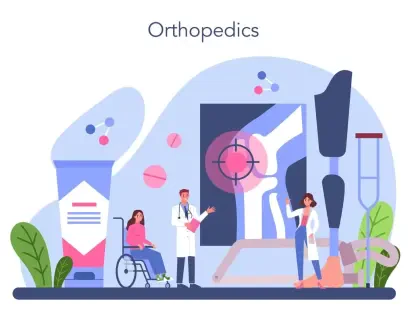Process improvement holds the key to revolutionizing healthcare delivery by enhancing patient care, boosting organizational performance, and fostering the professional development of healthcare providers. Drawing insights from experiences within the Physician MBA Program at the Kelley School of Business Indianapolis, it becomes evident that training in operations management and process improvement equips physicians with essential skills to navigate the evolving healthcare landscape. A central theme is the adoption of comprehensive process improvement methodologies, which aim to optimize healthcare delivery within highly complex systems. By involving all stakeholders—patients, providers, administrative staff, and leadership—effective solutions can be designed and implemented, considerably impacting patient outcomes and systemic efficiency.
The Importance of Process Improvement Methodologies
Structured process improvement methodologies like the Plan-Do-Study-Act (PDSA) model and Lean Six Sigma frameworks are crucial for streamlining healthcare processes. These methodologies offer systematic approaches to identifying and resolving inefficiencies that often compromise patient care. By reducing errors and enhancing patient outcomes, these tools provide a common language that stakeholders can use to communicate effectively. When all team members are aligned in their approach to process improvement, significant and lasting changes can be achieved across the entire organization.
The role of stakeholder involvement in process improvement cannot be overstated. Engaging everyone from patients and providers to administrative staff and leadership fosters a comprehensive understanding of the issues at hand. This inclusive approach ensures that all perspectives are considered, paving the way for sustainable solutions that address the needs of all parties involved. By creating a holistic view of the care delivery process, healthcare organizations can more accurately identify gaps and implement changes that lead to improved efficiency and patient care outcomes.
The Shift from Triple Aim to Quadruple Aim
Over recent years, the healthcare industry has evolved from the Triple Aim framework to the Quadruple Aim. Initially, the Triple Aim—introduced by the Institute for Healthcare Improvement—focused on three objectives: enhancing the patient experience, improving population health, and reducing per capita costs. The Quadruple Aim expands on this by incorporating a fourth objective: enhancing staff safety and satisfaction. This addition underscores the critical importance of healthcare providers’ well-being in achieving overall system performance.
The shift to the Quadruple Aim recognizes the detrimental impact of provider burnout on healthcare delivery. By prioritizing a supportive and satisfying work environment, healthcare organizations not only improve staff retention and engagement but also ensure better patient care. A satisfied and well-supported workforce is more likely to deliver high-quality care consistently, which positively affects both patient and organizational outcomes. Therefore, prioritizing healthcare provider well-being is beneficial not only for the staff but also for the patients and the organization as a whole.
Key Elements for Successful Process Improvement Implementation
Identifying key stakeholders is the first step in successful process improvement implementation. Building a dedicated team composed of individuals directly affected by the processes under review lays a solid foundation for the initiative. This team ensures that the perspectives and insights of all relevant parties are considered, fostering comprehensive solutions. Equally important is the clear definition of the problem and the establishment of metrics to measure the impact of improvement efforts. This structured approach enables organizations to create a repeatable process for continuous improvement, allowing them to adapt and evolve in response to emerging challenges and opportunities.
Financial, human, and technological resources are critical to driving meaningful process improvements. Allocating sufficient time, securing stakeholder commitment, and ensuring seamless access to relevant data are fundamental components of a successful initiative. A robust understanding of financial data can significantly inform operational decisions and enhance resource utilization. The Kelley Physician MBA Program emphasizes the integration of financial acumen with process improvement, helping healthcare professionals make informed decisions that optimize resource allocation and drive efficiency.
The Role of Education and Training
Education and training play a pivotal role in equipping healthcare staff to undertake and sustain process improvements. Process improvement coaches are instrumental in setting up initial processes and providing ongoing support to ensure lasting success. These coaches help embed principles of process improvement into the daily routines of healthcare teams, fostering a culture of continuous improvement and innovation.
Highly reliable organizations encourage every team to independently lead process improvement initiatives. While expert guidance is often beneficial, empowering all teams to drive changes fosters a proactive approach to problem-solving across the organization. Ongoing learning and adaptation to change are essential for maintaining improvements over time. Effective change management and the application of implementation science ensure that improvements are deeply ingrained within the organizational culture, promoting long-term success.
The Challenges and Rewards of Process Improvement
In recent years, the healthcare industry has progressed from the Triple Aim framework to the Quadruple Aim. The Triple Aim, initiated by the Institute for Healthcare Improvement, concentrated on three main goals: enhancing patient experience, improving population health, and reducing per capita costs. However, the Quadruple Aim adds a fourth goal: enhancing staff safety and satisfaction. This addition highlights the crucial role of healthcare providers’ well-being in optimizing overall system performance.
The transition to the Quadruple Aim is a recognition of the adverse effects of provider burnout on healthcare delivery. By fostering a supportive and fulfilling work environment, healthcare organizations not only bolster staff retention and engagement but also ensure improved patient care. A satisfied and well-supported workforce is more likely to consistently deliver top-notch care, positively impacting both patient and organizational outcomes. Therefore, emphasizing healthcare provider well-being benefits not just the staff but also the patients and the organization as a whole, creating a more resilient and effective healthcare system.









